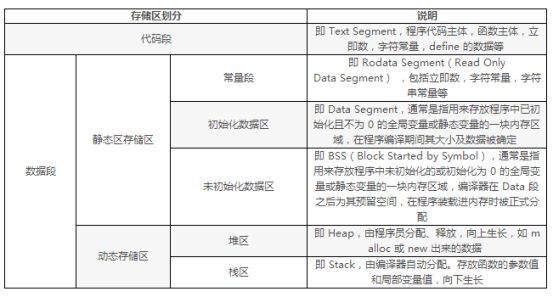First talk about the memory organization of the MCU.
Monthold, the types of memory used in the MCU are: FLASH, RAM, ROM (including EEPROM)
From a software perspective, the storage of programs and data is divided into the following sections:

Note:
Both the code segment and the constant segment can be used to store constant data. The main difference is that if the constant can be used as an operand of an assembler instruction, the constant is compiled into the code segment. If it cannot be represented by an assembler operand, it is stored in a constant section. If "0x05" in "uchar a=0x05;" will be compiled into code "mov #0x05, a"; if it is "uchar a[]={0x05, 0x06}" then "0x05,0x06" is placed in constant The section, when a[] is initialized, will use a assembler instruction to copy the contents of the constant section into a[].
How does the software memory area correspond to the hardware memory type?
In general terms are as follows:

Note:
1. The ROM in the MCU is usually used to store manufacturer information, controller model and other information;
2. For x86 architecture systems, because there is no Flash type memory, all software storage areas are eventually loaded into memory, but its memory is segmented, and users have different access rights to different memory segments. Segments and constant segments cannot be modified by the user. If an accidental modification is made, a segmentation exception is thrown.
Now that we know the type of memory and the partitioning of each memory area, let's look at the following three sets of programs:
1.
Static void ProcStr(void)
{
Uchar Str[] = {"12345"};
}
In this program, Str[] is a local array whose size is 6, and the occupied stack space is 2 characters; "12345" is a constant, which is stored in the constant segment; the initialization process of Str[] is equivalent to from the constant The area copies 6 characters of data onto the stack. The 6 characters are "12345\0".
2.
Static void ProcStr(void)
{
Uchar Str[] = "12345";
}
In this program, Str[] is a local array whose size is 6, and the occupied stack space is 2 characters; "12345" is a constant, which is stored in the constant segment; the initialization process of Str[] is equivalent to from the constant The area copies 6 characters of data onto the stack. The 6 characters are "12345\0".
3.
Static void ProcStr(void)
{
Const uchar* Str = "12345";
}
There is no array in this program, the only Str is a local pointer, its size is 4 (in a 32-bit system), so this program only takes up 4 (on 32-bit systems) character stack space; "12345" Is a constant, is stored in the constant segment; Str initialization process is to initialize the pointer Str to the address of the constant "12345", the subsequent program directly access the constant segment through the pointer Str, no memory copy process.
From the above analysis we can see that the first two methods are the same. All need to allocate storage space for local data and copy the data from the static storage area. The last method is to directly access static data through pointers without copying. If the string length is greater than the length of the pointer in the system, the third method will be much better in time and space than the first two methods (the third method greatly saves the stack space and reduces the time spent copying the data) .
However, for the MCU, it is not always the third method. The reason is that the third method is to directly access the constant section. From the above table, it can be seen that for the MCU that stores constants in Flash, accessing the constant section requires This is much slower than accessing RAM. Therefore, if you need to access this string frequently, then the first two methods will be better in speed, because the first two methods only need to visit Flash once, and the third method needs every time. Visit Flash.
Of course, if you need to modify the contents of the string Str in the next program, you can only use the first two methods, the third method will prompt an error.
Special note: Some of today's content is related to the features of the compiler. There are differences between different compilers and even different versions of the same compiler.
Cylinder Sensor
Cylinder type NTC temperature sensor with the properties of good appearance, water resistance, flexible, safety and good protection has been used to air conditioner, oven, refrigerator and cold storage. Insulated shell can be chosen to install and temperature range is from -30°C to 105°C or 0°C to 250°C.
Cylinder Sensor,Oven Sensor,Freezer Sensor,Waterproof Sensor
Feyvan Electronics Technology Co., Ltd. , https://www.fv-cable-assembly.com
